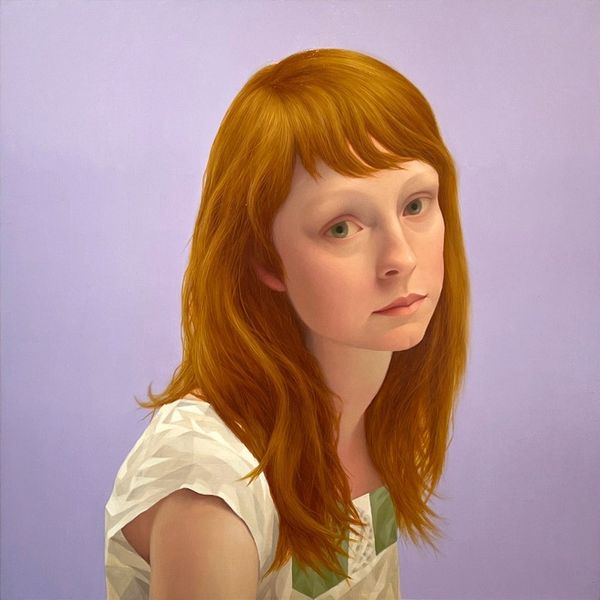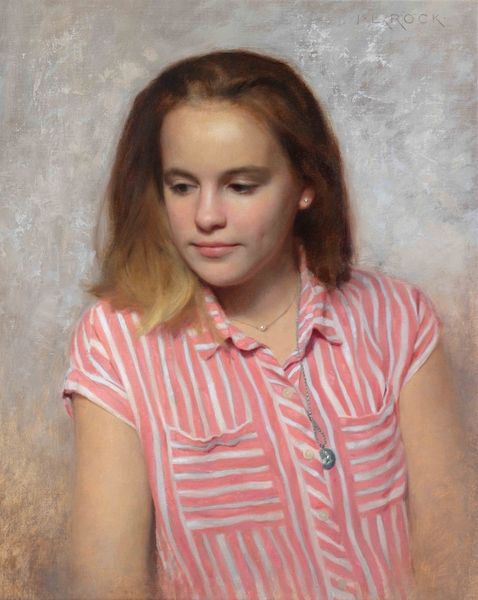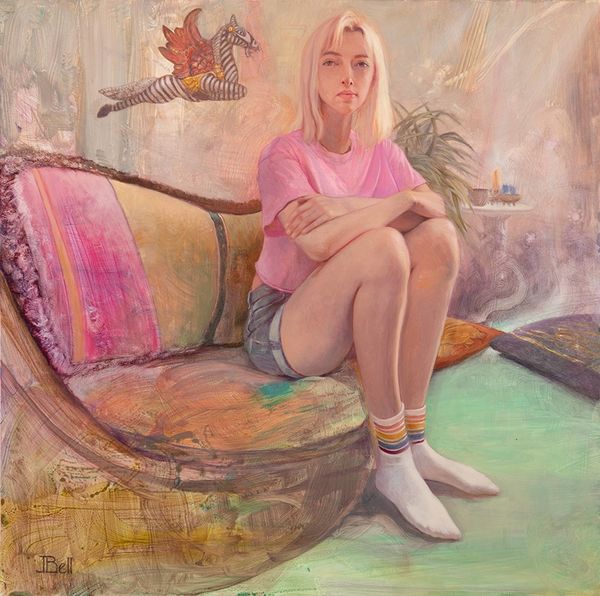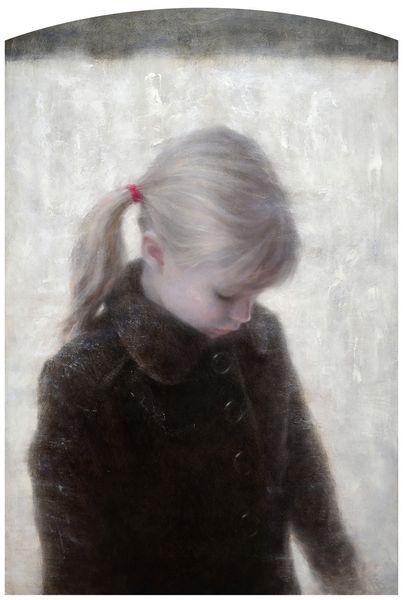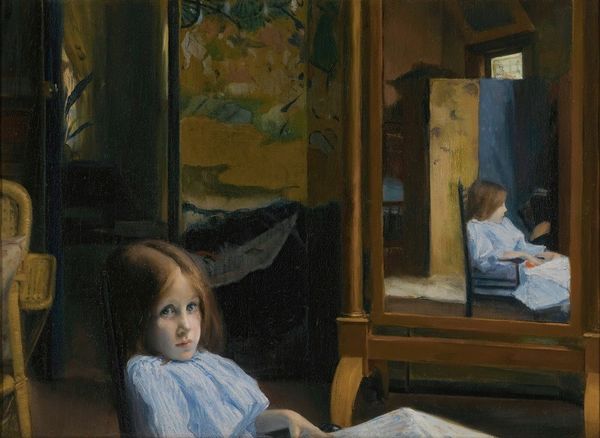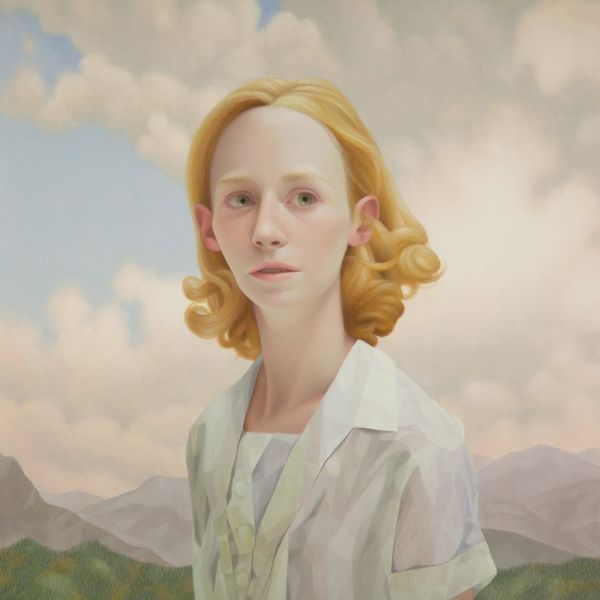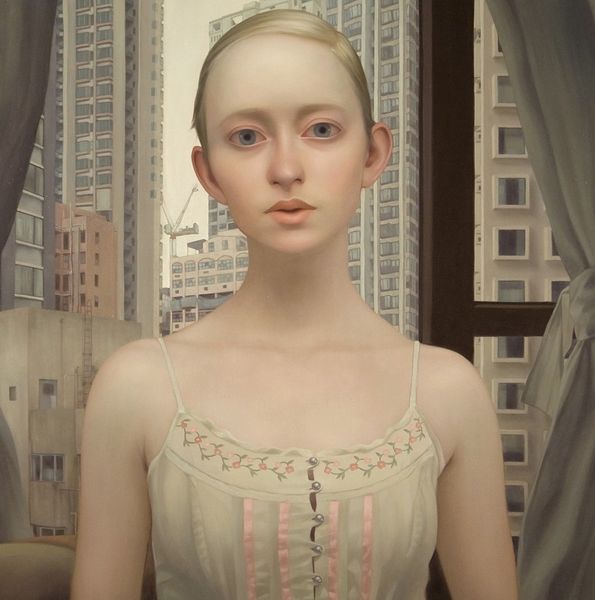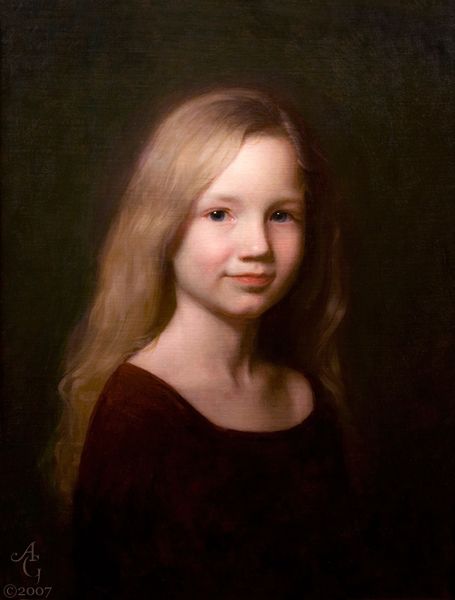
painting
#
portrait
#
figurative
#
painting
#
figuration
Copyright: Modern Artists: Artvee
Editor: We're looking at a portrait called "The Waiting Room" by Vincent Xeus, a painting of a young girl. I'm struck by how the red floral background almost overwhelms her; it feels quite unsettling. What do you see in this piece, especially thinking about the materials used and how it was made? Curator: Well, let’s consider the context of portraiture itself, often commissioned by the upper classes. Here, though, we have this "waiting room"—is it a literal space, or a symbolic one suggesting the liminal stage of childhood? Notice the layering of paint, almost obscuring details. The mass-produced floral wallpaper hints at domesticity, maybe a middle-class aspiration, clashing with the implied wealth often linked to painted portraits. Editor: So, you are suggesting the painting is challenging what it means to produce art? Curator: Precisely! Think about the labor involved. Someone painstakingly created that wallpaper design, it was then mass produced and distributed, a far cry from the artist's individual brushstrokes. How does the artist, Xeus, position himself within this complex web of production and consumption? Is this a celebration, a critique, or perhaps just an observation? The almost sickly sweet pink further emphasizes that material reality. Editor: It’s interesting to consider the wallpaper as a mass-produced element versus the hand-painted figure. It definitely reframes how I view the piece. Curator: Exactly. It's a tension between the unique and the reproducible, and how artistic value gets constructed around material things, and especially around the human touch. Editor: I never thought I could learn so much about a portrait like that. Curator: By interrogating materials and their production, we can unpack social narratives embedded within the artwork itself.
Comments
No comments
Be the first to comment and join the conversation on the ultimate creative platform.

